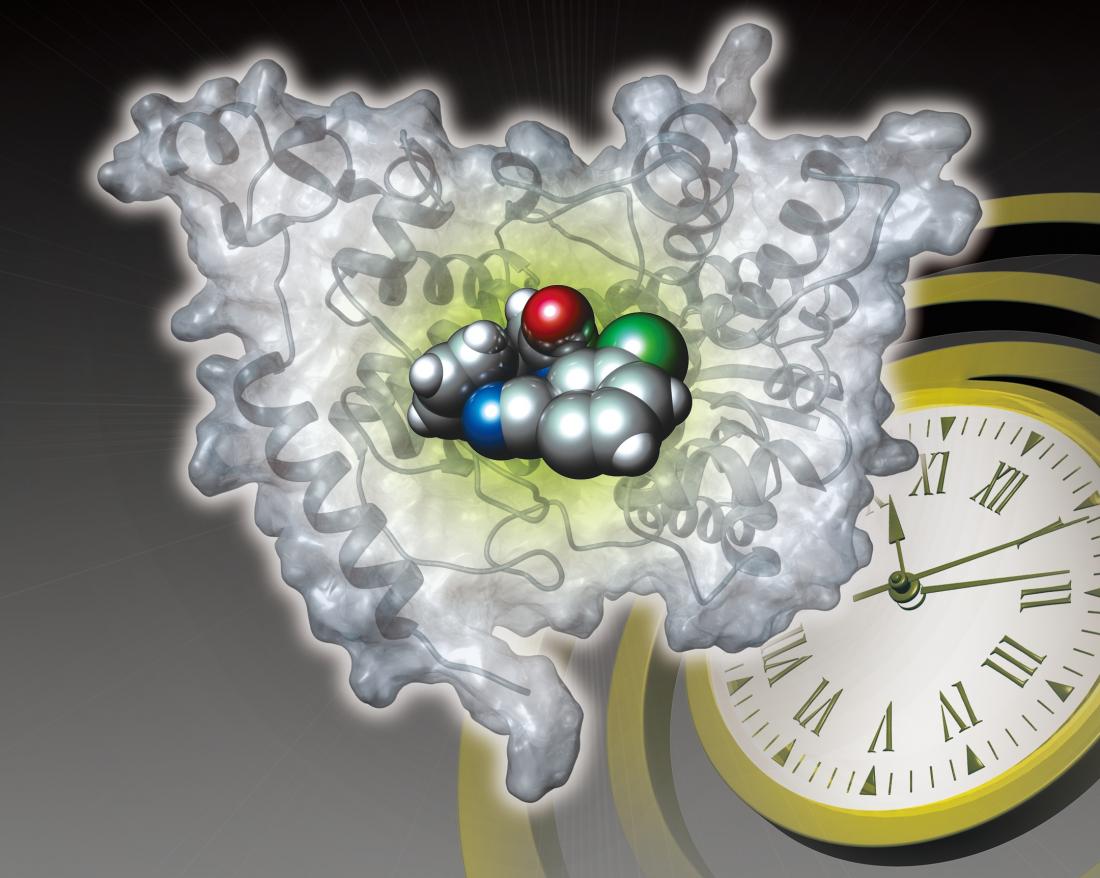A small molecule, KL044 binds to CRY, an essential component of the circadian clock
Almost every aspect of our life varies over time: we wake up in the morning, sleep at night, and become hungry at about the same time every day. These biological processes that occur over time are called the circadian rhythm; an approximately 24-hour cycle regulated by the circadian clock, which is an interplay among genes and proteins in every cell of the body.
The circadian clock regulates many physiological processes, such as body temperature, metabolism and hormone secretion. Various environmental factors, including sunlight and temperature, affect the circadian clock. Furthermore, the circadian clock can be disturbed by modern lifestyle changes, such as shift works or long distance flights, which in turn can lead to sleep or metabolic disorders. Understanding how the circadian clock works and how it affects our physiology is therefore vital to understand and find treatments for these disorders.
Tsuyoshi Hirota and Steve Kay of the University of Southern California previously discovered a small molecule named KL001 (a compound discovered at the “Kay Laboratory”) that binds to the CRY protein, an essential component of the circadian clock. KL001 prevents degradation of CRY and slows down the speed of the circadian clock.
In this study, published in the journal ChemMedChem, the group led by Hirota, Kay, Anupriya Kumar and Stephan Irle of the Institute of Transformative Bio-Molecules (ITbM) at Nagoya University, they succeeded in developing a small molecule that binds to the CRY protein and slows down the circadian rhythm even further compared to KL001.
The group has developed derivatives of KL001 to understand which parts of the small molecule are effective in controlling the circadian clock. Biological activities of the compounds were tested, and they built a model using the 3D structure of CRY-bound KL001 as a template.
In this fashion, the structure-activity relationship of the small molecules was examined at the atomic level. With this approach, the group identified the structural basis of CRY-acting compounds. In other words, they were able to identify which parts of the small molecule can be modified to make it more effective, for example, making it bigger or smaller in certain directions. Also, the model provided explanation for why certain compounds were not effective.
Eventually, the group discovered a 10 times more potent derivative relative to KL001, called KL044. Using this information will enable studies to virtually screen a relatively large collection of compounds with the computer and test the most potent molecules in the lab.
Through a combination of organic synthesis, biological screening and computational modeling, the group was able to find the most potent CRY-acting molecule so far.
“This knowledge will guide us in the search for even more effective molecules, which will potentially lead to the discovery of new drugs for circadian clock-related diseases,” say Kumar and Hirota.



